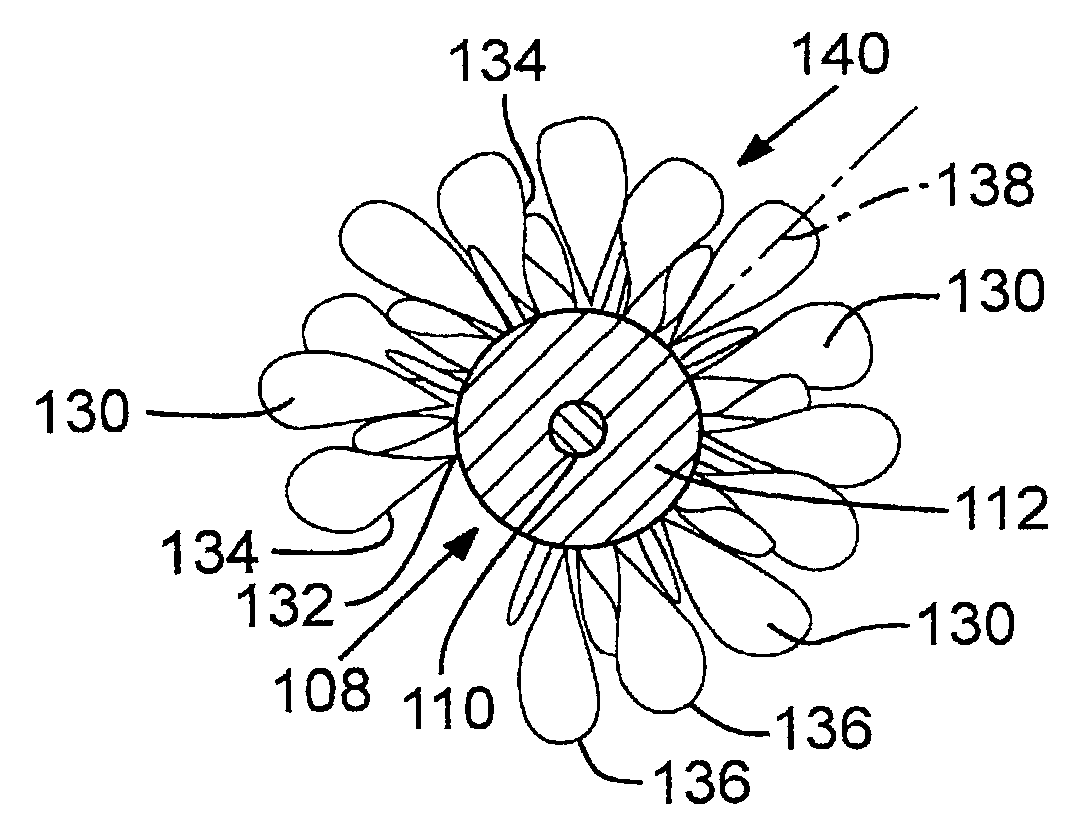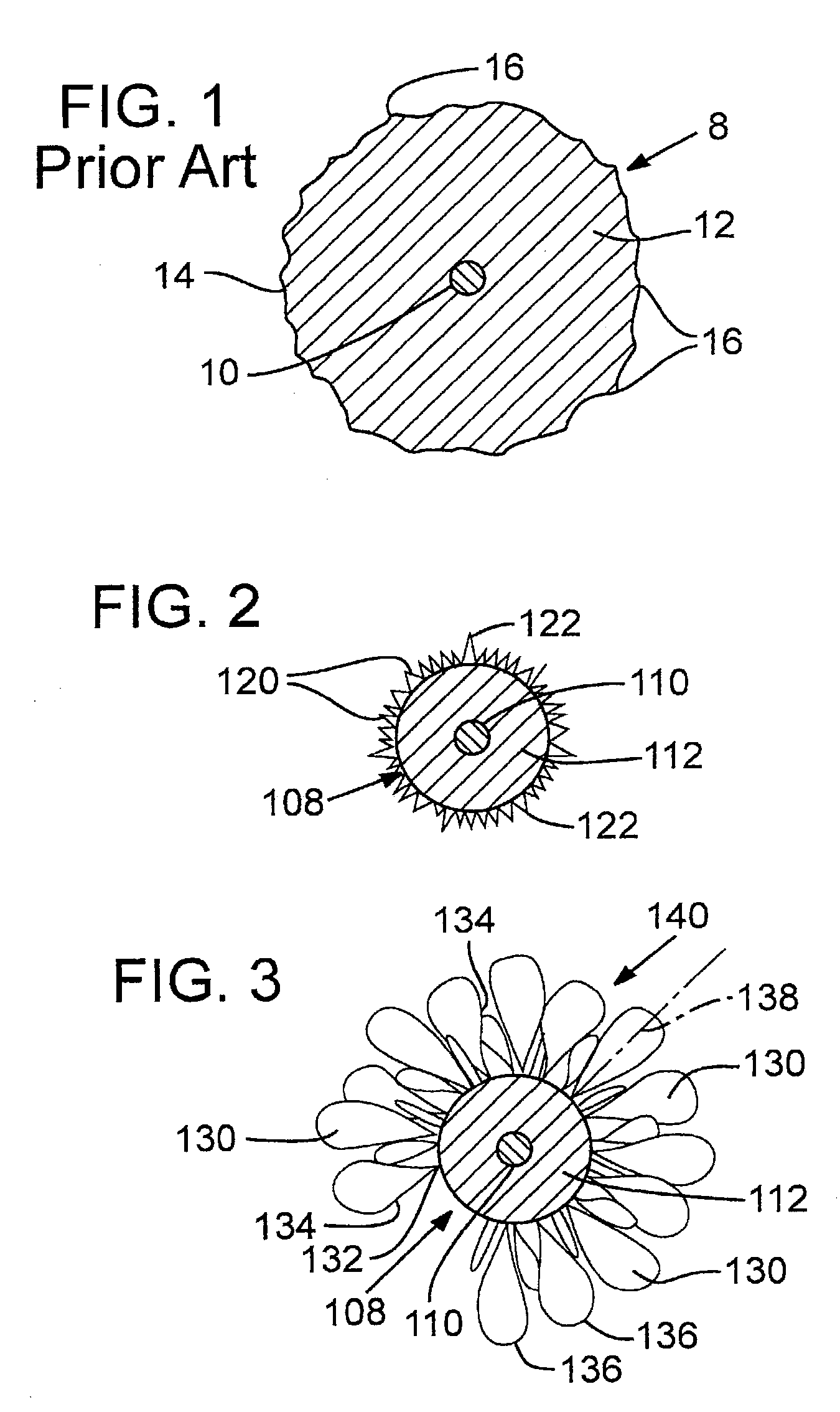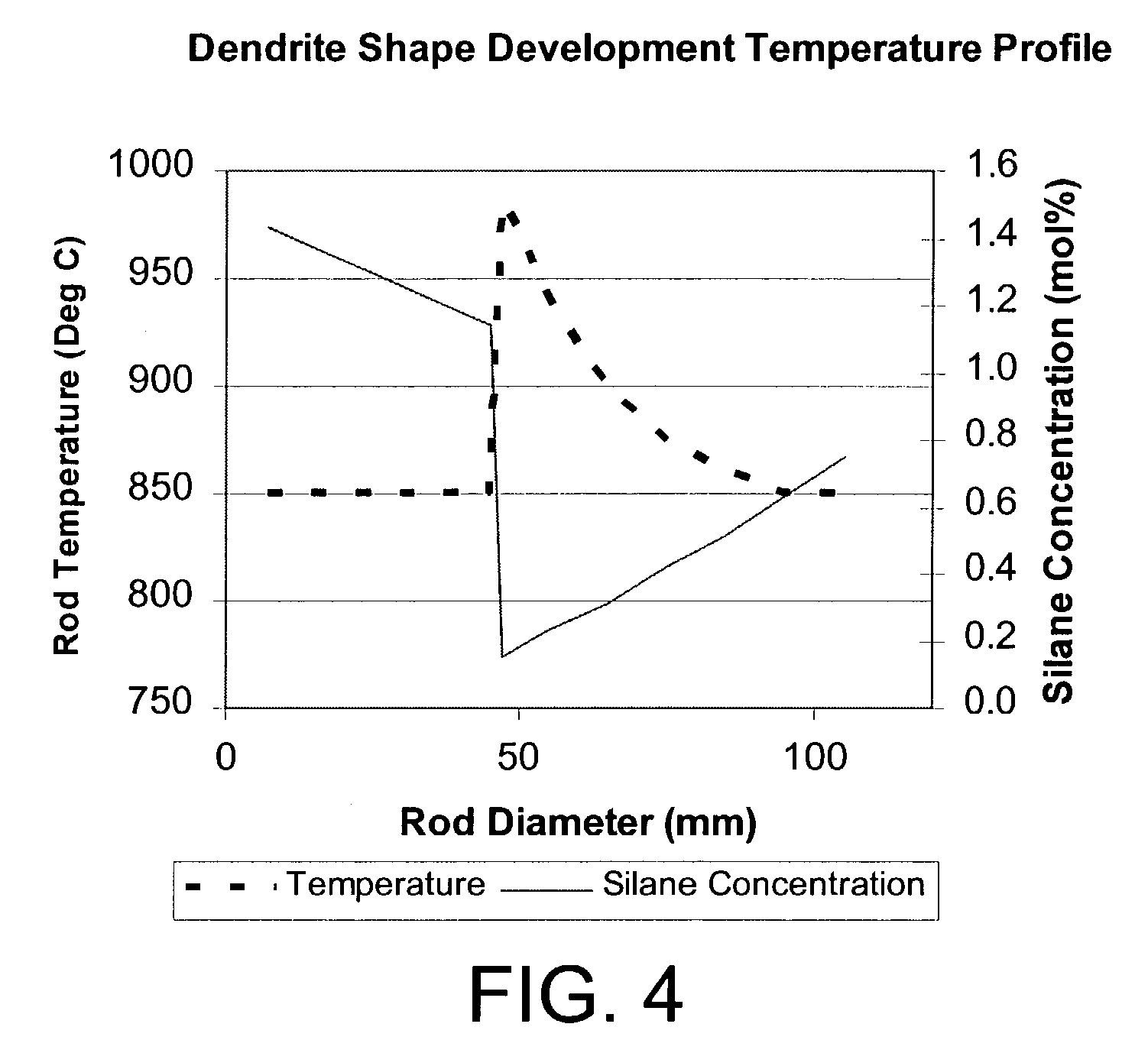Energy efficient method for growing polycrystalline silicon
a polycrystalline silicon and energy-efficient technology, applied in the direction of silicon compounds, crystal growth process, condensed vapor, etc., can solve the problems of reducing the reaction rate controlling the deposition of silicon also increases, and the energy requirements to produce a unit mass of polysilicon also increase. , to achieve the effect of reducing contamination, easy to break away, and reducing the reaction rate controlling the deposition of silicon
- Summary
- Abstract
- Description
- Claims
- Application Information
AI Technical Summary
Benefits of technology
Problems solved by technology
Method used
Image
Examples
Embodiment Construction
[0029]Rods grown under traditional conditions in a thermal decomposition furnace are similar to a rod 8 shown in FIG. 1 wherein a starter filament or rod 10, is covered by a continuous, generally cylindrical growth layer 12 of polycrystalline silicon. The growth layer 12 has a generally smooth exposed outer surface 14 with some rounded mounds 16.
[0030]To obtain such generally smooth-surfaced rods using silane (SiH4) as the reactant gas, rod surface temperatures must be maintained on the order of 825° C. Corresponding temperatures using trichlorosilane (SiHCl3) as reactant are on the order of 1050° C. to 1100° C. Other silicon-containing compounds, such as disilane (Si2H6), trisilane (Si3H8), dichlorosilane (SiH2Cl2), silicon tetrachloride (SiCl4), dibromosilane (SiH2Br2), tribromosilane (SiHBr3), silicon tetrabromide (SiBr4), diiodosilane (SiH2I2), triiodosilane (SiHI3), and silicon tetraiodide (SiI4), each have its own optimum surface temperature for deposition. The silicon-contain...
PUM
| Property | Measurement | Unit |
|---|---|---|
| temperature | aaaaa | aaaaa |
| temperature | aaaaa | aaaaa |
| temperature | aaaaa | aaaaa |
Abstract
Description
Claims
Application Information
 Login to View More
Login to View More - R&D
- Intellectual Property
- Life Sciences
- Materials
- Tech Scout
- Unparalleled Data Quality
- Higher Quality Content
- 60% Fewer Hallucinations
Browse by: Latest US Patents, China's latest patents, Technical Efficacy Thesaurus, Application Domain, Technology Topic, Popular Technical Reports.
© 2025 PatSnap. All rights reserved.Legal|Privacy policy|Modern Slavery Act Transparency Statement|Sitemap|About US| Contact US: help@patsnap.com



